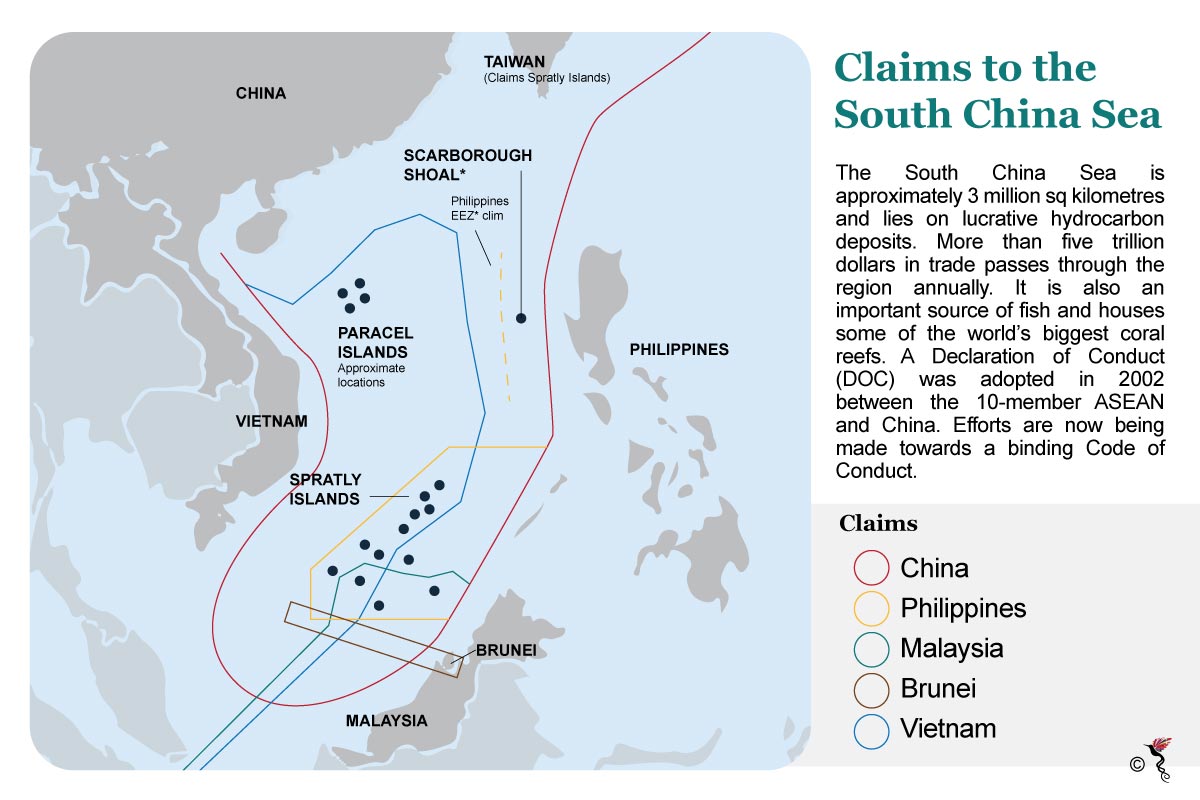As the world continues to be fixated on nuclear tensions in the Korean Peninsula, lesser attention has been devoted to China and their island building activities in the disputed South China Sea area.
Beijing claims nearly all of the sea and according to a report by Asia Maritime Transparency Initiative (AMTI), has been turning reefs in the Spratly and Paracel chains into islands, installing military facilities and equipment on them.
In a feature published last Thursday, AMTI said that Beijing engaged in “continued substantial construction activities” in the disputed region despite rival claims across the sea from Vietnam, the Philippines, Malaysia, Brunei and Taiwan.
China on Friday defended its construction on disputed islands in the South China Sea as "normal", after the US think tank released new satellite images showing deployment of radar and other equipment.
Responding to the report, foreign ministry spokesman Lu Kang was quoted by Agence France Presse (AFP) as saying: "If China is conducting any peaceful construction activity or deploying necessary defence facilities, it's very normal because it's within our sovereignty."
"We believe that some individuals are making a fuss about this. They're trying to hype it up," Lu told a regular news briefing.
Island building capacity
Fiery Cross Reef saw the most construction this past year, with building work spanning 27 acres, or about 110,000 square metres, AMTI said its analysis of satellite images showed.
There is now a high frequency radar array at the northern end of the island, it added.
However, China alone cannot be solely blamed for island building as other claimant countries like Vietnam and Taiwan have been allegedly reclaiming land on water features that barely break the surface of the sea.
Meanwhile, the official Xinhua news agency reported on Friday that China's southern island province of Hainan has revealed a satellite launch plan to "assist remote sensing coverage" over the South China Sea.
The mission will start in 2019 with the launch of three optical satellites, Xinhua cited the Sanyan Institute of Remote Sensing as saying.
The report follows recent moves by China to ease concerns among rival claimants around the sea, through which some $5 trillion in annual shipping trade passes.

Disputed claims in the South China Sea (Source: AFP)
ASEAN’s hand in the dispute
Vietnam and China agreed last month during President Xi Jinping's visit to Hanoi to avoid conflicts in the hotly contested waters.
At a meeting with the 10-member Association of Southeast Asian Nations (ASEAN) in November, China and ASEAN countries agreed to begin talks on a much-delayed code of conduct for the sea.
The Philippines had for many years stood alongside Vietnam as one of the region's strongest opponents to Chinese expansionism.
Following Manila's complaint to a United Nations-backed tribunal, the panel ruled last year that China's territorial claims in the sea were without legal basis.
But the Philippines, after President Rodrigo Duterte took office last year, decided not to use the ruling to pressure China.
He instead chose to build closer ties in return for billions of dollars in investments and aid.
A South China Sea Code of Conduct
However, Duterte did announce that China is willing to come to the talking table to discuss a more binding Code of Conduct. With the Philippines already passing on the mantle of ASEAN’s leadership to Singapore, into 2018, the onus is now on the island nation to push that agenda forward.
Singaporean Foreign Minister, Vivien Balakrishnan during a lecture outlining Singapore’s priorities during its chairmanship, admitted that the dispute is “not going to be solved overnight.”
“The Code of Conduct is not a panacea, but it is a very positive step, and ASEAN and China have so much more to look forward to,” he added.
According to Joshua Kurtlantzick, Senior Fellow for Southeast Asia at the Council for Foreign Relations, Singapore is likely to be firmer in handling the dispute when it assumes stewardship of ASEAN.
“I think Singapore may be willing to take on more forcefully the challenge of getting ASEAN countries to come to some kind of real consensus on the idea of a South China Sea code of conduct with China, although that will be a hard task,” he told The ASEAN Post in an email interview.
Military buildups are cause for concern and queasiness especially in a fickle matter like this dispute. Regardless of who’s guilty of island reclamation and the building of military capacity, one thing must remain clear – this is no arms race; a diplomatic solution is what’s necessary and should be the primary tactic of resolution.
Additional reporting by Agence France Presse
Recommended stories:
